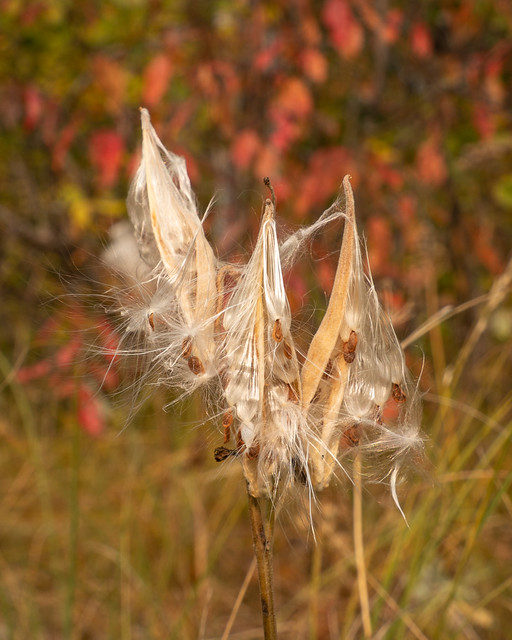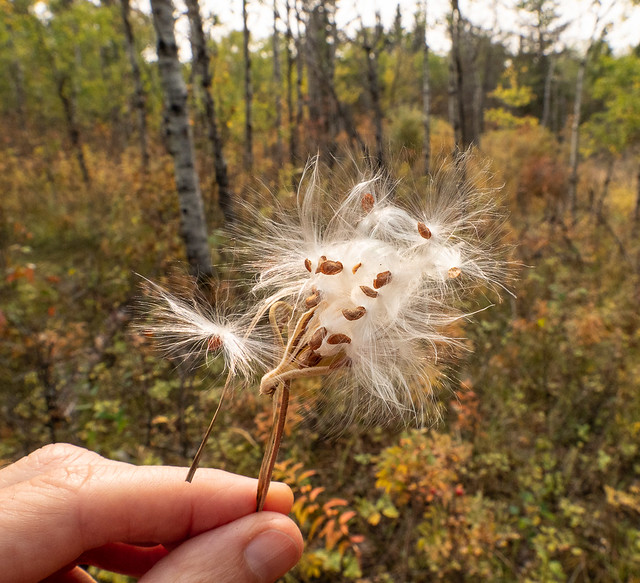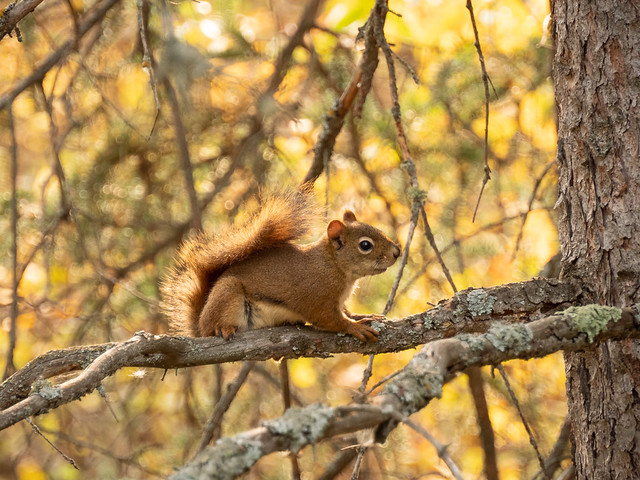We got out for a nice autumn hike at Eb's Trails on Saturday. It was one of our better fall days - up to 28c and sunny other than the haze, presumably from smoke from other provinces. Despite dry conditions in parts of Saskatchewan, we haven't had as bad a year for fires as other places.
One of the first things I noticed were these seed pods bursting with fluffy seeds.
They looked a lot like ones I'd seen on Chris Helzer's blog. I couldn't remember what plant they were from. Milkweed? Or was I getting confused with Monarch butterflies and milkweed. Seek only said it was a kind of dogbane. It turns out the seeds probably are Milkweed, which is a kind of dogbane. Reading up on it later, I found that milkweeds produce some of the most complex flowers in the plant kingdom, comparable to orchids in complexity
We've already had some freezing nights so there aren't too many insects left. On the positive side, that means no mosquitoes or other biting insects. But it also means less to photograph. These Black Meadowhawks were plentiful and quite a few of them were mating. I guess the eggs overwinter in the water?
These shelf or bracket fungus are always interesting. Fungus on trees can be parasitic (on live trees) or saprotrophic (on dead trees). They're more common in mature forests with lots of dead wood.
Red squirrels didn't seem to be common in this forest. This one froze in position. A lot of animals mostly see motion, so freezing is a good tactic.
Near the water I saw a few small frogs jump at my feet, but they were too quick for me to photograph. This one was in a slightly more open spot and I managed to herd it to a spot where I could photograph it. I'm pretty sure it's a Wood Frog. They manage to survive the freezing temperatures of our winters by generating natural anti-freeze in their blood.
Mourning Cloak butterflies are another creature that manages to survive Saskatchewan winters - no easy feat! Because they overwinter as adults, they are one of the first butterflies to emerge in the spring. This was a large healthy looking one.
There were quite of few of these Banded Wooly Bear caterpillars (of the Isabella Tiger Moth) around. They overwinter as caterpillars.








No comments:
Post a Comment